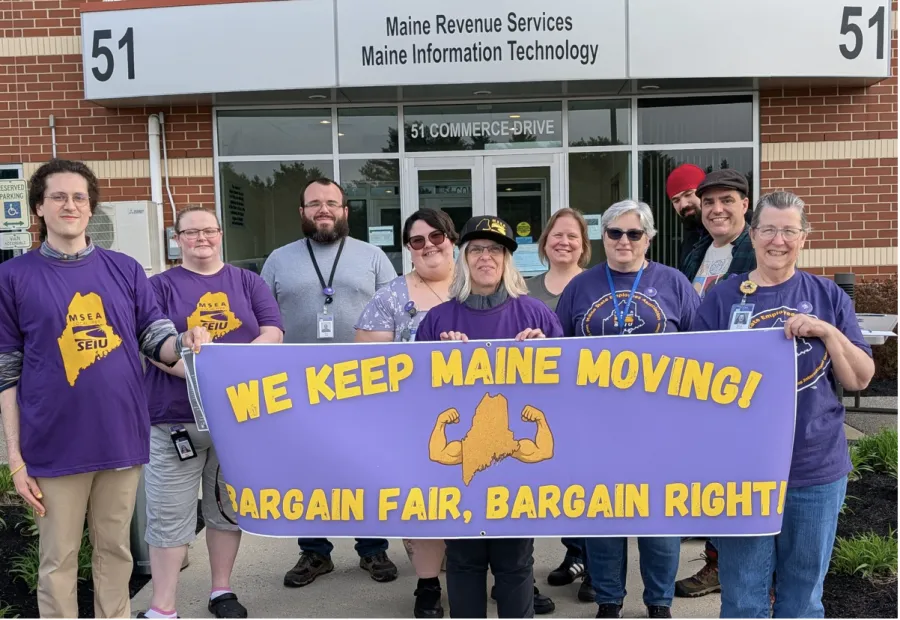Maine Service Employees Association (SEIU 1989) Holds Intensive Worksite Outreach Program

The Maine Service Employees Association (MSEA-SEIU 1989) just completed a two-week intensive worksite outreach program to organize new members to join the union in the executive branch of state government. The union partnered with SEIU Together We Rise, a union initiative focused on growing union membership. The two-week blitz involved going out to numerous workplaces that the union represents, meeting with workers, answering questions and signing up new members.
“There was a lot of excitement,” said MSEA President Mark Brunton, who went on the worksite visits. “A lot of folks were happy to see us. We pretty much signed up members at every visit.”
The Supreme Court’s 2018 Janus decisioneliminated fair share contract provisions that required all public sector workers in a union represented workplace to pay fees for the cost of collective bargaining. As a result of the decision, public sector unions have had to work even hard to organize new members. One of the major challenges for MSEA is that their members are geographically spread out across the state from the New Hampshire border to the Canadian border.
“Going out into the workplaces and having these conversations is vital for us to grow in the ways that we really need to. It's grow or die for us in the public sector.”
In this latest worksite blitz, Brunton said the union turned out a lot of workers by sending out text messages to members at each worksite. A half hour before their visit, they would send a text blast to everyone who worked at the location to let them know they could visit union staff on their breaks or after work. Brunton said one of the lessons he learned from the experience was to pair member leaders and stewards with field representatives because it helps the break the ice with potential new members.
The organizing team held well-attended events at the Department of Health and Human Services offices in South Portland, Sanford and Biddeford as well as the Department of Transportation camp in Scarborough and several Bureau of Motor Vehicles offices. At the DOT camp, Brunton said the team heard concerns about their working conditions, especially around their duties cleaning up homeless encampments.
“They encounter a lot of drug paraphernalia and bodily fluids. They collected a 55 gallon drum of human waste,” said Brunton. “They feel as though the Department is not adequately protecting them from health and safety hazards. They don’t think it is in their job description to do that kind of work and believe that the department should be using other entities that are better trained for that.”
The worksite visits were also critical to gathering data about who is working on the site and who is working remotely, what their work hours are and more. Brunton said it’s important for other unions to understand that there is “no right way” to do this kind of organizing program.
“I think if other unions are thinking about growing and building their membership, they should definitely look into doing member blitzes,” said Brunton. “There's nothing like member to member contact.”
